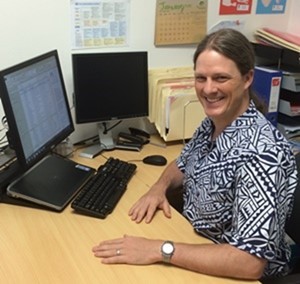Building on the Pacific’s culture of resilience
By Kevin Petrini
Friday, 13 February 2015
 When I first arrived in Samoa in 1998, I lived on the larger, less populated and more traditional island of Savaii, where things were ordered and everyone filled a very particular role. For example, to build a canoe, I first needed to find a tree, get permission from a local chief and go to the plantation to cut it down. Then a canoe builder for that area was commissioned and a small dedication ceremony was required before the canoe went to sea.
When I first arrived in Samoa in 1998, I lived on the larger, less populated and more traditional island of Savaii, where things were ordered and everyone filled a very particular role. For example, to build a canoe, I first needed to find a tree, get permission from a local chief and go to the plantation to cut it down. Then a canoe builder for that area was commissioned and a small dedication ceremony was required before the canoe went to sea.
Over time I came to understand the organization of life in Savaii, and how that organization was, in fact, the community’s foundation for resilience. After a cyclone, for example, the community sends young men to gather the fallen coconut for safe drinking water and specific root crops that heavy winds have not damaged. In my 13 years working on climate change and disaster risk management in the Pacific, I have learned that the foundation of resilience for these communities is their culture and way of life. Unlike many in international community, who see climate change and disaster risk management as two separate issues, these communities experience them as a single issue that reaches across all aspects of life.
The challenge now is to bring together local and global technical knowledge about risk, and embed this knowledge in a culturally sensitive manner that better protects these communities. And while it is obvious we have to bridge the gap between local and global, we still have a long way to go.
A step in the right direction is the Strategy for Climate and Disaster Resilient Development in the Pacific (SRDP). The SRDP is a regional joint climate change and disaster risk management strategy that emanated from national initiatives to integrate climate change and disaster risk management into development—a natural combination, given how these communities view these issues as inseparable and interconnected threats to sustainable development. The strategy is a concrete example of how practitioners at the regional level are finally catching up to a way of conceiving of risk that has been long in use in communities.
At UNDP, we’ve brought together our disaster risk reduction and climate teams. Along with sustainable energy, we now have a single team with a three-pronged focus on resilience. This will make us a resource that our partners can rely on for comprehensive support.
What will the future look like in the Pacific? It’s clear the effects of climate change will increase disaster risk. So now, more than ever, we need to develop the functional and technical capacities of our climate change and disaster risk management communities. We need the programmes and projects of these communities to build upon the resilience that already exists in the Pacific, and we need to forge genuine and durable partnerships between stakeholders that foster cooperation and trust. If we take this route, the communities of the Pacific will have a very real chance of bouncing back from disasters time and time again.
Kevin Petrini has been involved in international development work related to environment, climate change, disaster risk management and community mobilization in the Pacific Region since 1998. He is currently working as the UNDP Regional Climate Change Specialist for the Pacific. In this position, he is a member of the Technical Working Groups supporting the development of the Strategy for Climate and Disaster Resilient in the Pacific (SRDP). He has worked throughout the Pacific and most recently has been supporting the Government of Fiji with UNFCCC negotiations, a Climate Public Expenditure and Institutional Review and development of the Fiji Green Climate Fund Readiness programme. Previously, he worked for UNESCO as the interim Natural Sciences adviser for the Pacific, the GEF Small Grants Programme with focus on Community Based Adaptation and the United States Peace Corps as a Technical Training Coordinator. His development experience started with two years of service as a United States Peace Corps Volunteer working in a rural village in Samoa where he became fluent in the Samoan language and learned local customs. Kevin holds a Masters of Science in Chemical Engineering from the University of Colorado, Boulder, United States with a focus on atmospheric chemistry modeling and a Bachelor’s of Science in Chemical Engineering from Worcester Polytechnic Institute, United States.
 When I first arrived in Samoa in 1998, I lived on the larger, less populated and more traditional island of Savaii, where things were ordered and everyone filled a very particular role. For example, to build a canoe, I first needed to find a tree, get permission from a local chief and go to the plantation to cut it down. Then a canoe builder for that area was commissioned and a small dedication ceremony was required before the canoe went to sea.
When I first arrived in Samoa in 1998, I lived on the larger, less populated and more traditional island of Savaii, where things were ordered and everyone filled a very particular role. For example, to build a canoe, I first needed to find a tree, get permission from a local chief and go to the plantation to cut it down. Then a canoe builder for that area was commissioned and a small dedication ceremony was required before the canoe went to sea.